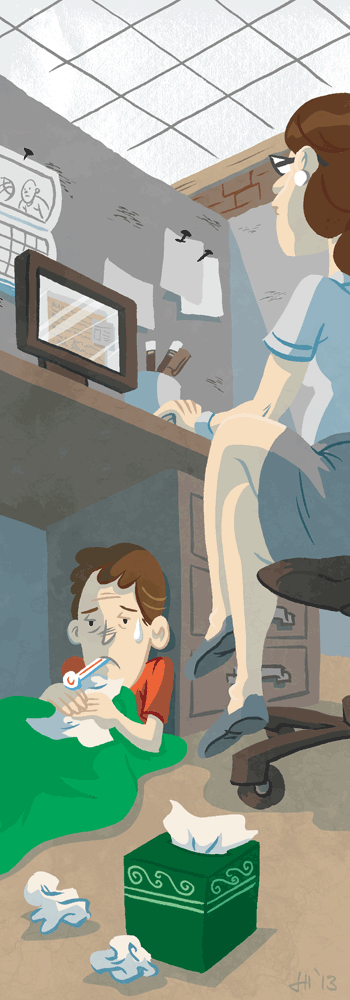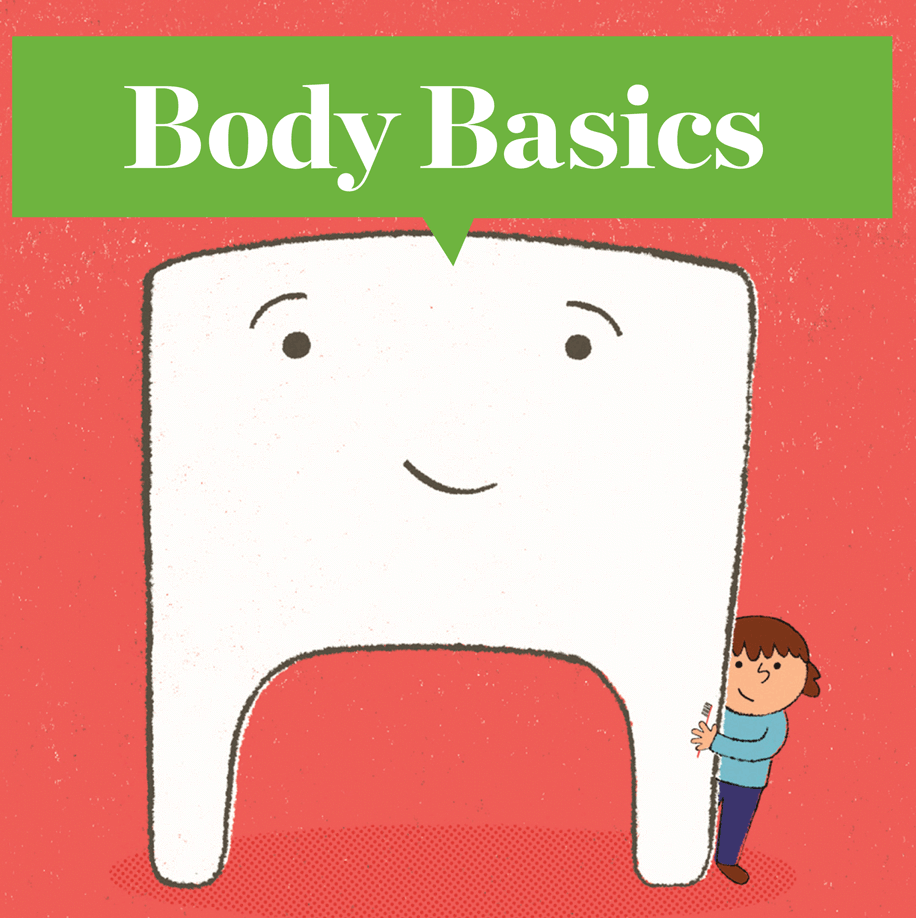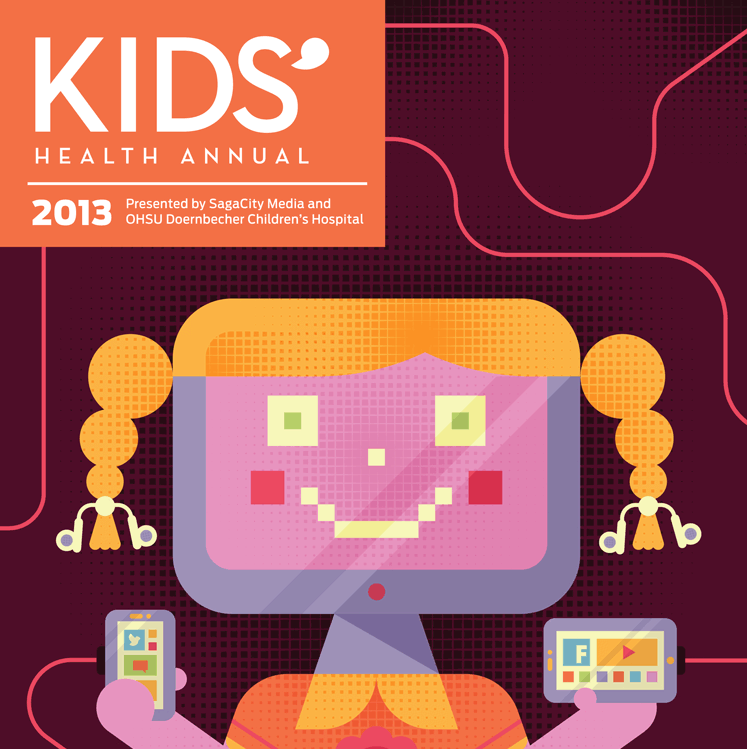The Sick Day Dilemma

Image: Jonathan Hill
Remember staying home from school? Sure, the sniffles and sore throat were no fun, but the novelty of watching TV all day and being waited on by Mom or Dad often made up for it. If you have kids of your own, you now appreciate the decisions they had to make about whether to send you to class or take a day off work themselves to bring you that chicken soup. And they weren’t thinking just about you: there were also classmates, other family members, and coworkers to consider, especially during the cold and flu season or local outbreaks like last winter’s norovirus.
Jane Kim-Hoffman, a pediatrician at OHSU, has some basic guidelines for when a child should stay out of school. A child sick with a fever, vomiting, diarrhea, or pinkeye may be contagious and needs to stay home until those symptoms have subsided for 24 hours. Take your child’s energy level into account as well. As Dr. Kim-Hoffman points out, “If the child is fever-free but not willing to move off the couch, he probably wouldn’t do well in class.” But if he has a mild cough and no fever, he’s probably fine to return to school.
Next comes deciding whether to take a sick day yourself—assuming you have a sick day. In March, the Portland City Council passed a new law requiring paid sick time for most employers, but it takes effect next year.
If you have an enclosed office and can limit your coworkers’ exposure, it might be fine to bring your child to work (assuming there’s no vomiting or diarrhea). A babysitter, friend, or family member can provide at-home care, but be careful to protect older family members from your child’s illness. Dr. Kim-Hoffman says it’s not uncommon to see older individuals struggle with their health when they contract the flu or other illnesses as a result of caring for sick grandkids.
To help make these decisions, an OHSU smartphone app and website called MD4Kids can keep recommendations at your fingertips. The app provides useful, reassuring facts, like the normal duration of illnesses and indicators of real emergencies, as well as schedules of action to take based on your child’s symptoms, from “Call your doctor now” to “Manage care at home.” “MD4Kids is a great resource,” says Dr. Kim-Hoffman. “If parents are unsure if they need to go to the emergency room or if they can send their kids to school, it can help answer those questions.”
No matter where your child ends up, you’ll have to pass the time. The kid who feels well enough to get bored and the parent who thinks six hours of television is pushing it will need to find some other entertainment. Build a fort using couch cushions, pillows, and blankets to create a space where your child can rest or play with toys. Card games, board games, and puzzles can occupy an hour or two at home or at the office. Be prepared for sick kids to get frustrated more easily than normal—this is not the time to challenge them. As an alternative to reading or coloring, you and your child can look through pictures and create a scrapbook, or just flip through family photo albums.
However your family decides to spend the day, if you trust your instincts, use your resources, and go to your doctor with any concerns, you and your child should make it through the next cold and flu season just fine.













